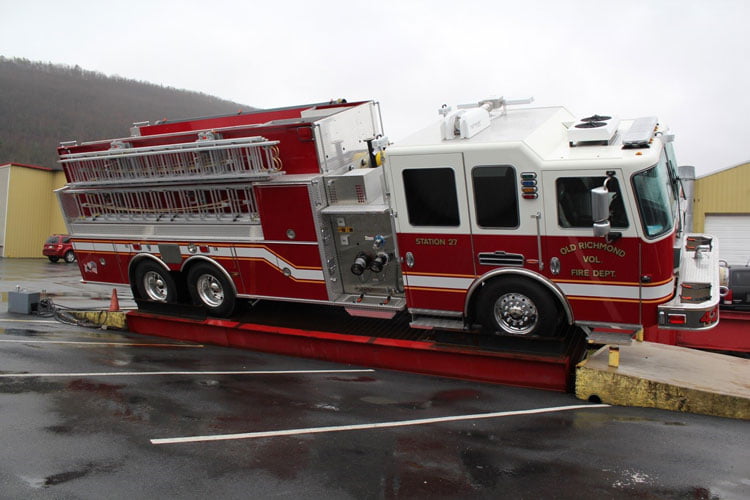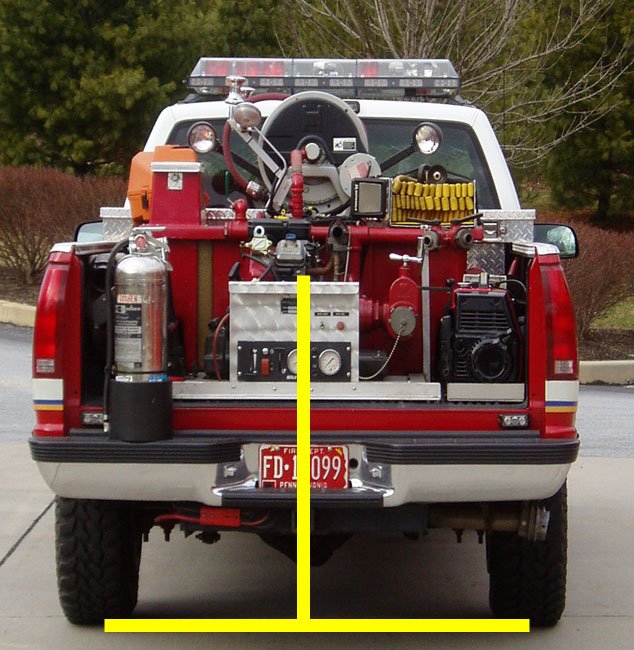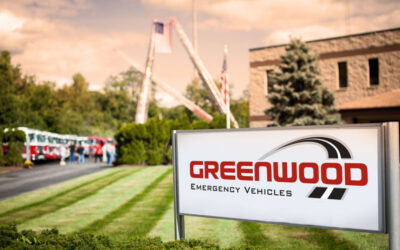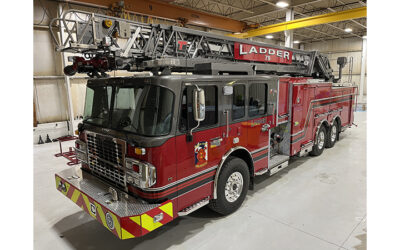In this article, we will examine some of the more serious safety issues faced by the fire apparatus operator. By reviewing recent case studies, it is apparent that our first topic should be that of fire apparatus rollovers. Rollovers are a common cause of fire apparatus crashes. Many of these rollovers are the direct result of one or more of the following conditions:
- Excessive speed.
- Inappropriate steering maneuvers
- Operation on soft shoulders
- Effect of fluid loads.
In Part I of this series we will discuss how the relatively high center of gravity and inherent geometry of fire apparatus make them especially sensitive to rollover. When a fire apparatus with a high center of gravity is combined with excess speed and harsh steering, disaster often results. Unfortunately, many driver training programs lack an in-depth explanation of rollover dynamics.
Rollover Thresholds
The first step in understanding fire apparatus rollover sensitivity is to understand the concept of a “static rollover threshold”. A vehicle’s static rollover threshold is a numerical relationship between the height of the vehicle’s center of gravity and it’s rear axle track width. The track width is the dimension between the center of the tires (or dual tire pairs) from one side to the other. The center of gravity is that point upon which all the mass of the vehicle is centered. If you could hang the vehicle from that point, it would be perfectly balanced. The higher the vehicle’s static rollover threshold, the more stable the vehicle tends to be. The static rollover threshold of a vehicle is calculated using the following formula:
As evidenced by this formula, a vehicle with a low center of gravity tends to be more stable because it has a higher static rollover threshold. Therefore, automobile manufacturers strive to design vehicles that have a low center of gravity. If the design and function of the vehicle prevents the center of gravity from being lowered any further, the only way to increase the vehicle’s static rollover threshold is to make it wider. A good example of this concept is a quarry truck. While the vehicle’s center of gravity is high off the ground, the vehicle is relatively stable because it is so wide.Unfortunately, fire apparatus manufacturers are limited in how wide they can build a vehicle. This is because fire apparatus drive on public highways and must fit within a travel lane. Because a fire apparatus can only be built so wide, any increase in the center of gravity height reduces the vehicle’s stability and increases the risk of rollover.
While the static rollover threshold provides a simple concept that is directionally accurate, the actual resistance to rollover is much more complex. Tires, tire pressure, suspension rates, suspension geometry, steering compliance, and anti-sway suspension features all affect the rollover resistance of a heavy truck. Generally speaking, given two trucks with the same static rollover threshold, the one with the softer suspension and tires will tip over sooner.
NFPA Requirements
NFPA 1901, Standard for Automotive Fire Apparatus, outlines minimum requirements for fire apparatus rollover thresholds. The NFPA requirements are based on two testing methods. The first method is a tilt-table test. In a tilt-table test, the apparatus is chained to a large platform and the platform is tilted until the vehicle begins to rollover. The angle at which the vehicle begins to rollover is used to calculate the rollover threshold. The second method is to determine the height of the vehicle’s center of gravity and calculate the rollover threshold using Equation 1. The required values are different for the two methods because the tilt table is a dynamic rollover threshold while the calculated method is a static rollover threshold. Since the calculation method does not account for the suspension characteristics, the NFPA committee wanted to require a more conservative value.
NFPA REQUIREMENT | CALCULATED ROLLOVER THRESHOLD |
Tilt-table result no less than 26.5 degrees | 0.49 |
Height of CG no more than 80 percent of the track width | 0.62 |
Table 1 – Rollover threshold requirements as indicated in NFPA 1901. The rollover threshold for the two methods is different due to the fact that the tilt table test accounts for movement in the vehicle’s suspension system, while the calculated value does not.
Table 2 provides the average rollover thresholds of different types of vehicles. As evident in Table 2, fire apparatus are relatively unstable when compared to passenger cars and light trucks. This poses a training issue for a firefighter who drives to the firehouse in a small, stable vehicle only to jump behind the wheel of a large fire apparatus with a high center of gravity. The firefighter must understand the significant change in vehicle dynamics that is associated with driving a fire apparatus and adjust his driving tactics. Failure to do so risks disaster.
TYPE OF VEHICLE | COMMON ROLLOVER THRESHOLD |
Passenger Car | 1.30 – 1.50 |
Pick-up Trucks and Vans | 1.00 – 1.30 |
Jeeps | 0.80 – 1.00 |
Fire Apparatus Minimum Requirements | 0.49 – 0.62 |
Table 2 – Average Rollover Thresholds by vehicle type
The moral of the story is this: Because of the high center of gravity and relatively short distance between the rear wheels, a fire apparatus will have a low rollover threshold compared with an average civilian vehicle. This low rollover threshold will make the vehicle inherently unstable and more likely to rollover—especially while rounding curves or making evasive maneuvers. We will discuss this concept further in Part 2.
A vehicle’s rollover threshold is a relationship between the height of its center of gravity and the trackwidth (distance between the rear wheels). A vehicle with a low center of gravity has a higher rollover threshold. A higher rollover threshold translates to better stability and more resistance to a rollover. (Photo by author)
NFPA requires a minimum rollover threshold. The rollover threshold can be calculated, or determined with tilt table testing. This photograph demonstrates tilt table testing at KME. (Photo courtesy of KME.)








